
Comic Book Historians
As featured on LEGO.com, Marvel.com, Slugfest, NPR, Wall Street Journal and the Today Show, host & series producer Alex Grand, author of the best seller, Understanding Superhero Comic Books (with various co-hosts Bill Field, David Armstrong, N. Scott Robinson, Ph.D., Jim Thompson) and guests engage in a Journalistic Comic Book Historical discussion between professionals, historians and scholars in determining what happened and when in comics, from strips and pulps to the platinum age comic book, through golden, silver, bronze and then toward modern
Support us at https://www.patreon.com/comicbookhistorians.
Read Alex Grand's Understanding Superhero Comic Books published by McFarland & Company here at: https://a.co/d/2PlsODN
Series directed, produced & edited by Alex Grand
All episodes ©Comic Book Historians LLC.
Comic Book Historians
Mike Royer, Inker of the Greats with Alex Grand
Join us from the Dallas Fantasy Fair, November 25, 2018 as Alex Grand interviews the famous inker, Mike Royer. Mike discusses his career starting out assisting Russ Manning on various projects like Tarzan in the early 1960s, Magnus Robot Fighter, then working in Animation making over 1/3rd of the work that went into the first 1966 Amazing Spider-Man season, inking Jack Kirby for Marvelmania 1969, and then DC and Marvel Comics for 10+ years, Plastic Man with Ramona Fradon, and his career at Disney starting in 1979 for over 20 years working on many projects including the redesign of the Winnie the Pooh character. Edited & Produced by Alex Grand. Music - Standard License. Images used in artwork ©Their Respective Copyright holders, CBH Podcast ©Comic Book Historians. Support us at https://www.patreon.com/comicbookhistorians
Podcast and Audio ©℗ 2019 Comic Book Historians
Alex Grand: So we’re here at the Dallas fantasy fair. I’m Alex with CBH and we’re talking with legendary comic book artist and inker. Mike Royer. Mike, thank you for joining us today.
Mike Royer: My pleasure. I’m having a ball. I haven’t been in Texas since 1979
Alex Grand: now. Mike, you’re born in 1941. Okay. So you’ve been around for a good while and you move to California. You’re working on comics with gold key comics. You were inking for people like Tony Strobel. you also had some because it was gold key. You were working on some Disney products even as early as then. That was when you were 24 years old.
Mike Royer: My first work was assisting Russ Manning and through Russ Manning I met Mike Aarons who became a real mentor for me and he hired me to ink the inbetween artwork they were producing at Grantray Lawrence animation on the marvel superheroes because it was basically stat work from marvel artwork and then they would extend and finish drawings and went in between and I actually wound up drawing in between drawings and my whole career was just being in the right place at the right time. When marvel superheroes was finished, they went on hiatus at the same time that Western publishing wanted more work from Russ Manning and Russ said, the only way I can give you more work is if Mike Royer is assisting me and I can’t pay him a living wage just to assist. So gold key comics called me and said, would you like to come in and pick up some work?
Mike Royer: Because they wanted more work out of Russ. A few months later, the animation studio called and said, we’re back in production. We’re going to do the first Saturday morning Amazing Spiderman will you come in?
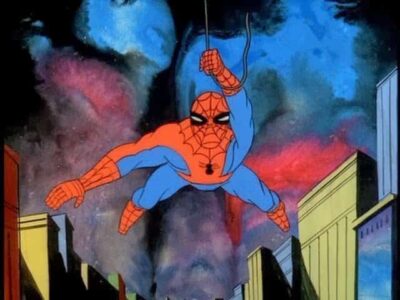
And I talked to the new production manager and should’ve realized right then that it was weird because he came from the construction trade and I said, I am so busy I can only give you 20 hours a week. And he said, well Mike, if you only do 20 hours, we cannot give you screen credit in being a naive 20 something. I didn’t realize if I had gone to the screen cartoonists union, which I was a member of and told them about it, they would have jumped all over him and I would have gotten credit because I laid out over one third of those 20 episodes and I worked directly with Grant Simmons who was grant of Grantray Lawrence.

And he wanted me to be the voice of Peter Parker and Spiderman, but Lawrence, the money man in New York wanted to stick with nonunion in Canada. But after the third week of working directly with the Grant Simmons, he said, Mike, we have a problem. Everybody at the studio is madder than hell at you. And I said, why? He said, because in your 20 hours you’re doing more work than they do in 40 hours in house. So I said, well, what do you want me to do? And he says, Bill me for 40.
Alex Grand: Yeah, you’ve always had a huge work ethic and I think a lot of people know that about you.
Mike Royer: Howard Chaykin once at San Diego comic con walked over and he says, Mike, you are my idol. And at first I thought he was being smart Alek, but I realized over the years that what he was saying is he liked my work ethic because Howard’s a guy that draws something every day. He, in my opinion, is one of the most sophisticated erudite intelligent artists I’ve ever met in my life. I have great respect for him.
Alex Grand: Yeah, I agree. So you were talking about the amazing spiderman cartoon and then gold key and you also, you inked Tarzan
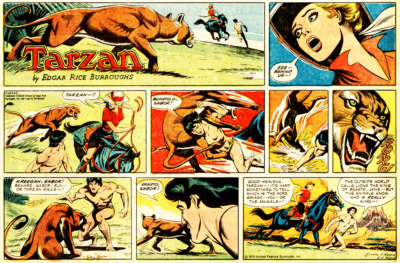
and Magnus Robot Fighter for Russ Manning is that correct?
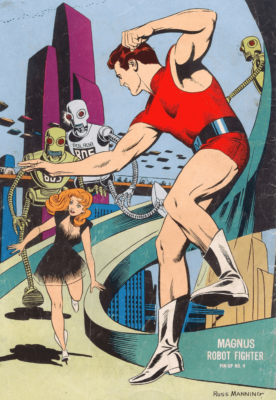
Mike Royer: Yeah, I assisted him on those books and over the years as things progress, there was the night that I got the phone call from Jack Kirby as Jack phoned e me and I started working for him and it became a tenure association.
Alex Grand: and that was in the early 1970s when that happened.
Mike Royer: It was late 1968. I did a lot of stuff with Jack for Marvelmania merchandise, a inked, a lot of those things like the toys for tots drive for the marines did every, every December and, I think I inked his God’s pictures that hung in his home
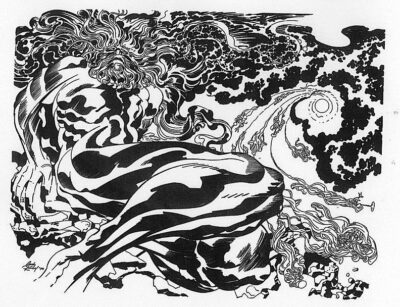
and they were his own personal things. And then I was supposed to be part of the plan when he went from Marvel to DC, they didn’t want me, it was either they didn’t know I’d been in the business already five years or they liked the cheap rate that they were getting from Vinnie. But after four issues of all the new world, fourth world books, they finally acquiesced to Jack’s wishes and I believe that they were convinced that I would fail. Then the books would go back to New York and they would have the control they wanted.
Mike Royer: To their chagrin. I didn’t fail.
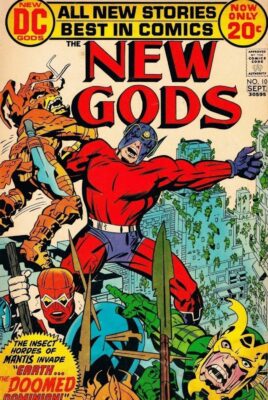
I’m the only guy that kept up with Jack. Everything he’d penciled I inked and lettered and there was a short period where I took a hiatus from Jack and wrote and drew a 44 page graphic novel called Jane for European Market. Did some Tarzan stories, one of which I have a print on my table and I’m proud of that because I started in my career inking Russ Manning and that is a page of my Tarzan artwork inked by Russ Manning, but shoot at some point in 1979. I was working with Russ on Star Wars

and Tarzan eventually signed the Tarzan Sunday pages manning and Royer, but I got a call from Sparky Moore who was one of my mentors when I moved to California in 1965 and he said, Disney is looking for some freelancers to work on their foreign comic strips and Comic Book Division.
Mike Royer: So I went in with some samples and they gave me a couple of assignments and in a short time they called me and said, would you like to come in and talk about your future? And I thought, Oh wow, a steady freelance gig. But they said, would you like to come on staff? And in less time that it takes to tell. I said yes. And so I told Russ I’m going to work at Disney
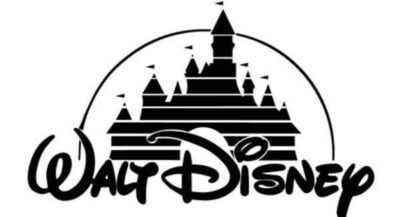
and that’s when I found out that this guy who always wanted to draw Tarzan and Flash Gordon and that kind of stuff, that my bag turned out to be big foot funny animals and some of the best work I ever did, especially for the Disney stores in my last seven years of the 21 plus years I did Disney art. I did some large like murals 16 by 22 and I just started in the middle and when I was finished I sat back and went, hell did I do this?
Mike Royer: Because all the time Jack is looking over my shoulder and my head and saying, tell a story, Mike, do it your way. And that’s the influence to Jack had on me, was never to be afraid of a blank piece of paper. Tell a story and do it your way.
Alex Grand: So you had a lot of Jack or Jack Kirby left alot of influence on you as you were working on the Disney products for a long time.
Mike Royer: I think the best work I did at Disney is because in my mind I’m thinking about the things that Jack told me. Jack, when he would talk to aspiring cartoonist the point he would make us do it our way, you know, don’t, don’t ape me. And I learned a lot from Jack. The first person I learned visual storytelling from was Russ Manning, that any idiot knows to go from panel under panel two and three.
Mike Royer: But if the artist is as good at visual storytelling, there are design elements in each panel that makes you go into the next panel exactly where he wants you to go first and then read it and then it’s something that shoves you or down the page until the next panel. So when I say storytelling, that’s what I mean. And the two masters I worked with were Russ Manning and Jack Kirby. And when I worked on the marvel superheroes, I met guys that I learned things from like a Mel Kiefer. And uh oh Geez. Who created Johnny Quest?
Alex Grand: Oh, Doug Wildey
Mike Royer: Yeah. Doug Wildey. Doug was a kick in the pants. And Doug is when I realized that most cartoonists when they draw women are drawing their wife. Jack was drawing Roz and, and Wildey was drawing his wife, when I met her, it was like, Oh God, that’s lady dorma from the sub mariner, you know, from the cartoons and uh, you, you draw the things I guess you’re familiar with.
Mike Royer: The people I met the Sparky Moores, the Mike Aarons. Mike Aarons was an artist who was one of the backbones of artists at Western publishing who is unknown and superhero comic fans don’t like to admit the fact that Dell and then Gold Key comics until the late sixties out sold marvel and DC combined. But guys like Mike Arons and Sparky Moore and until he was allowed to sign Magnus, Russ Manning where these unknown talents. And as a kid, I remember loving the Buck Jones cowboy comic books and most of them were drawn by Mike Aarons and now I’m working with Mike Aarons and because we hit it off personally, I worked with him on a moonlighting project where of all things he was penciling and lettering and I was inking a Batman Comic Strip that only appeared in the southern states and the shopping newspaper and it was based on the sixties TV show and the only record I have, those are some Thermofax copies that are now have turned so brown. One day I’ll run across the collector who actually got those Sunday shopping supplements that has that Batman Strip for me because the first thing is actually ever said to me was I said hello. He says, Mike Royer this Jack Kirby, Alex Toth says you’re a pretty good inker And then I went out to his house and sat at his board and inked his Marvelmania biography piece with him looking over my shoulder every 15 minutes and then breaking for lunch. Roz makes sandwiches. I met his two daughters, you know, Lisa was just a little thing then and from that time on I felt like extended Kirby family and that’s the effect they had on people. Sometimes people ask me what was it like on the daily routine of Inky Jack and I can’t remember because I was too busy doing it.
Mike Royer: What I remember is sitting in the kitchen eating Roz’s, homemade chocolate cake, sipping a glass of milk can, talking to Roz and Jack and listening to his memories of Warner brothers movies. I’ve said this many times when people asked me what is the basic difference between me and Joe Sinnott and if you know anything about the motion picture studio system and the dichotomy in the end of the fifties is that Joe Sinnott inked Jack Kirby, MGM.
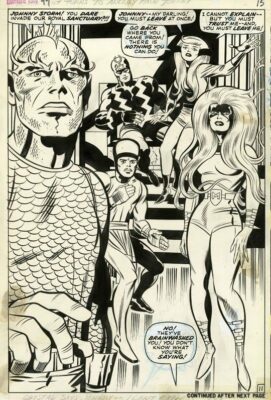
I inked Jack Kirby, Warner Brothers
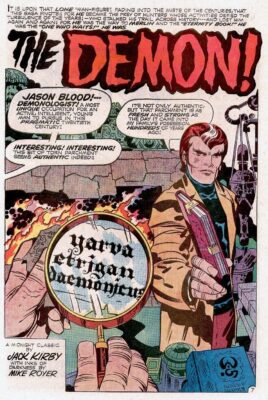
and that’s about the best way to explain it. Now people who understand what I’m saying, Oh, you’re absolutely right, because Joe, you know, like mgm and all the stars in the universe and the slickness and the gloss of their productions, that’s Joe Sinnott inking Jack and me is just warner brothers programmer. The only thing on the page is what is necessary to tell the story, and I love Joe Sinnott’s work.
Mike Royer: I first saw his work in the Buster Brown free comic book that as a kid I loved to pick up because there was a Neil o’Keefe jungle boy drawings or stories and I remember a science fiction story that Joe Sinnott signed it and so I knew who he was and I have great respect and admiration for the man. He is a phenomenal talent, but I want to say this and I don’t want it to sound egotistical. It’s realistic and Roz confirmed it at the wake after Jack was interred, people would say, who was Jack’s favorite inker? And he would say, Mike Royer. Before that he was very political. He’d say, well, Frank Giacoia got these strengths and so on and so forth, but what Jack realized shortly after I did that first piece, it was my baptism of fire and it was him seeing that it came from my hand and how it worked under pressure and after that he began to realize how faithful I was because I grew up on Jack Kirby comic books and I knew instinctually when I was looking at stories in the Simon and Kirby books that it came for one man’s hand.
Mike Royer: At the time I didn’t know whether it was Simon or Kirby, but so I was raised on this and I would look at his occasional pencil page in a fanzine in the mid sixties and ask the question, why is no one inking Jack? Now I inked the Ramona Fraden plastic man one time and got the most pages I’ve ever inked.
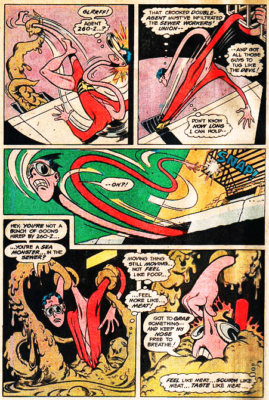
Five pages a day of Ramona Fraden, and she said the nicest thing to me. She said, it’s the first time anyone has ever inked Ramona Fraden. And she said, if I were still doing Brenda Starr and you were available, you’d be inking me when I took that as a combo because my philosophy has always been, if I’m inking someone else, I want it to look like they had inked it, you know, I was supposed to be basically invisible John Verpoorten at Marvel Comics once after I inked a couple of Don Heck pages, and he said, Mike, I’m not really that happy with the work. And I said, well, what’s wrong? He says, well, I wanted you to do a Joe Sinnott job on heck. And I said, John, there are two things you didn’t tell me. Number one, that you wanted me to do Joe Sinnott ink job, and number two, how much more you were going to pay me to do it. Because if my name was on those books, I’m pressure sure you’d swear Don Heck did them himself because I was completing Don Heck’s pencils. But you know, tell me what you want, John. And if you’re gonna pay me more to do it.
Alex Grand: Now I have two questions from a fan slash historian perspective. First you penciled Keith Giffen on the defenders issue, 49 and 50 and Keith Giffen kind of started out with a very kirby inspired look.
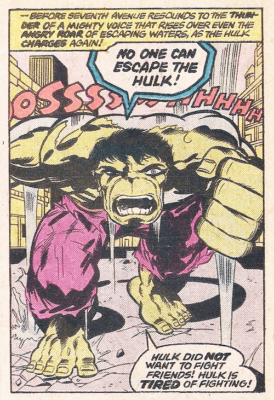
Did your inks make it look more Kirby like, or did it the pencils look more Kirby like already?
Mike Royer: Well, I don’t think there was anything I could have done it as an Inker to make it more Kirby, like because I would be fussing with his pencils, which to me was like being an abortionist. I remember when I asked the Paul Norris Tarzan comic books for Goldkey for Western publishing and the editor wanted me to give it a Russ Manning ink job and I think of the first issue or so I tried to do that when I started feeling like an abortionist because it wasn’t Paul Norris anymore.
Alex Grand: So you told me the other night, something really fascinating, this really interesting lunch between Burne Hogarth and Jack Kirby, you and Roz were there. Tell us about that.
Mike Royer: Well, Jack and I for several years, were volunteer judges at an art competition between junior high and high school students in Orange County. You know, some very famous people came out of like Rick Halbert who’s up in Seattle now and Burne Hogarth was a judge one year and Burne and Jack two of the greatest exponents of dynamic dynamic artwork. Ross and I went to lunch and for 90 minutes, Roz and I sat there grinning and rolling our eyes to the ceiling because Jack and Burne were arguing now. Not a strong argument, but they were disagreeing with each other and what Roz and I were amused by was the fact that they were both saying the same thing but in different languages. Uptown erudite sophisticated Burne Hogarth and his hundred dollar words and Jack Kirby, the street fighter from the main streets in New York City and his language and neither one of them recognized the fact that they were saying the same thing and that was just to me that that was a great lunch because I admire both men.
Mike Royer: If I can segue the year, I won an ink pot at comic con, it’s 2:00 in the morning when the doorway of an all night party I’m about to go into and there’s a hand on my shoulder and I turned around in the spring, Hogarth, and he says, well, we got ours kid, and I was thinking, Damn Burne, you should’ve gotten it the first year. But I have a photograph at home that I laughingly refer to as three Tarzan artists. It’s at the 1968 world science fiction convention in Los Angeles and Burne Hogarth was displaying his artwork for his Watson Tarzan of the apes color book. And as Burne Hogarth on my right, Russ Manning on my left and I’m in the middle and I’ve got shoulder length hair, the van Dyke and headband. And I call that three Tarzan artists. There are a lot of people who, when they hear that about me, they can’t imagine me and shoulder length, hair and a headband. And, but that was the late sixties, you know,
Alex Grand: toward the end of your Kirby time inking. You went over to Disney and you worked there for 20 plus years.
Mike Royer: I was on staff for a little over 14 years and I got tired of what I was seeing in the department politics. I wasn’t a big fan of the policies of the head of the department and I thought I could either take a 44 magnum to work or take her to lunch, ordered a glass of wine hold her hand and say, Susan, you’ve heard me talk about how life is an adventure. She says, you say that a lot. I said, well, I’m quitting, and she was so upset that she blacklisted me for seven years. Not realizing that I was her greatest resource on the outside because I had retooled the whole look of the Pooh characters,
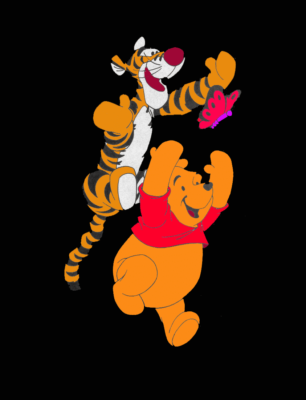
which ultimately outsold mickey mouse worldwide based on the stylization that I used and they signed off on, but the Disney stores called me. I don’t know how they heard about it and they said, please come work for us.
Mike Royer: You’ll never be out of work. You don’t have to come in. And I never signed the work for hire contract and it was the most creative years of my 21 plus with Disney where those seven plus years as an independent contractor for the Disney stores because I was able to on the weekends, moonlight for Warner brothers and Hanna Barbera and thanks to having a wife who was great with numbers when we left California and I moved back to my home state of Oregon. We paid cash for the house because she knew how much to put on the principal every month. So the house, our second house in Simi Valley, California, which we’d been in for three years, was well over half paid for.
Alex Grand: Well that’s great, you deserve it because you’ve worked hard. Really. Your whole life and your work ethic, your creativity and your skills really show. Thanks for talking to us today. We really appreciate it.
Mike Royer: Well thank you. I’m flattered that you were interested.
© 2020 Comic Book Historians
